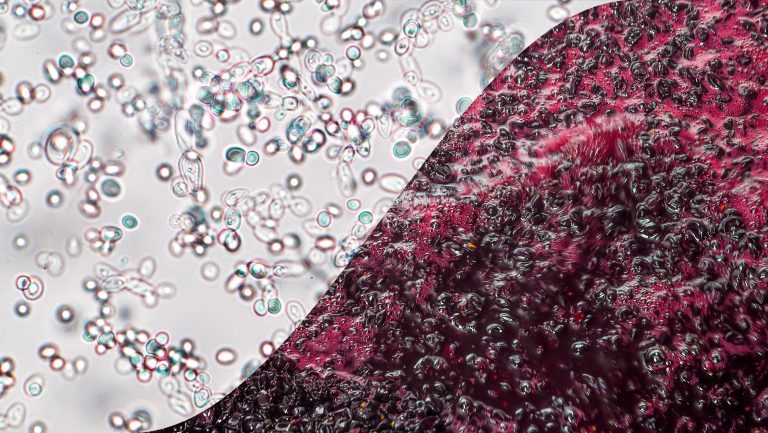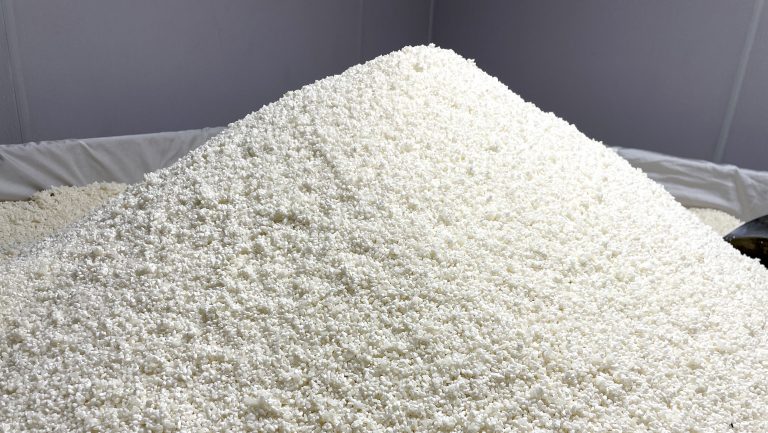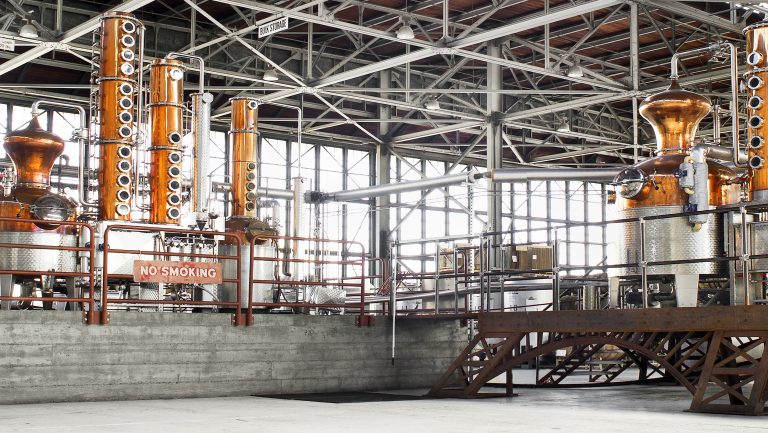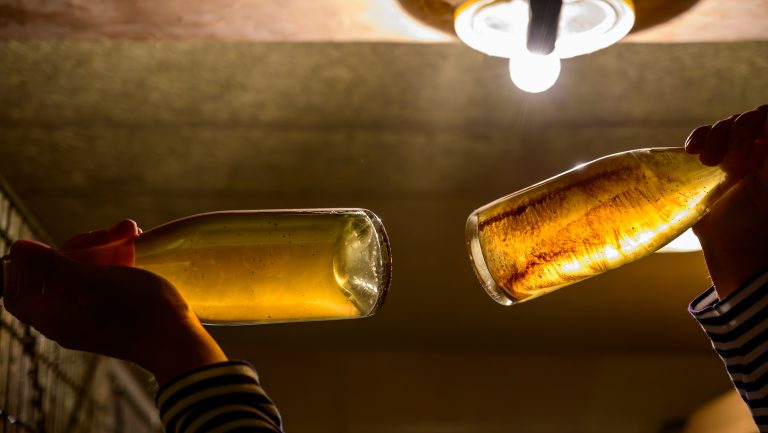For thousands of years, people have been mystified by the way fruit juice, if left alone long enough, will start to bubble and become a complex, aromatic, and intoxicating beverage. In ancient times the phenomenon was largely credited to spiritual or supernatural entities. In the Middle Ages the froth that formed on top of a fermenting cask was skimmed off and added to help start the next batch. The Middle English term for that scum, with its mysterious power, was goddes god: God’s gift.
In 1680 the Dutch naturalist Antonie van Leeuwenhoek became the first person to directly observe yeast cells, by means of lenses he developed. Two hundred years later, Louis Pasteur correctly hypothesized that those microscopic organisms were responsible for fermentation, and that different microorganisms could create different flavors in wines from the same grapes. And in 1890, Hermann Müller first isolated pure strains of yeast and used them as starter cultures for winemaking.
Today’s winemakers realize what a crucial consideration yeast is—it affects how quickly fermentation begins, how rapidly it progresses, and what the final product tastes like. Whether to add it or not is one of the first decisions about yeast that must be made by a winemaker. According to Jamie Goode’s Authentic Wine, only about 20 percent of wine made around the world is fermented by yeast cultures that have deliberately been added to the batch—the rest depends on wild yeasts already present to do the job.

Don’t miss the latest drinks industry news and insights. Sign up for our award-winning newsletters and get insider intel, resources, and trends delivered to your inbox every week.
Picking Apart the Role of Yeasts
Where do winemaking yeasts come from? Any crop growing outdoors is a habitat for wild yeast colonies; the skins of grapes in a vineyard are home to a diverse variety of yeast species that throng into the fermenter with the juice. One of the chief varieties is the strain Kloeckera apiculata, which is typically accompanied by Metschnikowia pulcherrima and several species in the Candida and Pichia genera. Left to their own devices, these wild yeasts will ferment the sugars in crushed fruit into alcohol. Tens of wild yeast species work together to produce what French enologist Pascal Ribéreau-Gayon, in his Handbook of Enology (volume 1), referred to as “lower quality wines with lower alcohol strength.”
But outside of laboratory experiments, K. apiculata, M. pulcherrima, and company are seldom left to their own devices. Ken Wright, the founder and winemaker of Ken Wright Cellars in Oregon’s Willamette Valley, has been working for several years with five other wineries in the state on a series of rigorously designed studies intended to identify just which microorganisms make wine.
The group is using DNA fingerprinting—matching the genetic profiles of yeasts they find against those of known strains—to determine exactly which yeasts were present on the same grapes at four intervals: at harvest time, at the beginning of fermentation, midway through fermentation, and at fermentation’s end. “Many people doing natural winemaking,” says Wright, “are suggesting that their vineyard yeasts are doing the fermentation, and that’s a warm, fuzzy, wonderful story,” but he says that according to his group’s research, “it’s just not true.” He concedes that yeasts from the fruit skins are part of the picture. “But there are already other yeasts involved,” he says, “even on the very first day [of fermentation]. By the time we got to 10 percent sugar, every time, all the vineyard yeasts were gone.”
Saccharomyces cerevisiae, also known as brewer’s or baker’s yeast, doesn’t commonly grow on grape skins in the vineyard—in part because it can’t tolerate direct sunlight well—but it’s the species most essential to winemaking, and it fiercely defends that role. It’s uniquely tolerant of alcohol, and that trait allows it to out-compete other yeasts during winemaking. The wild yeast species turn sugar into ethanol, but once the concentration of ethanol in their environment reaches higher than 5 percent, it kills them; strains of S. cerevisiae, however, can survive well into the teens. Once introduced to a winery—either intentionally, as a commercial culture, or as a stowaway on some apparatus or clothing—it lives on the equipment, on the walls, and on the personnel—and it eagerly joins in any fermentation that’s taking place.
“The yeasts that are fermenting your wine are not vineyard yeasts,” explains Wright. “They’re the [S. cerevisiae] yeasts that have a foothold in your house. In each winery, they’re hanging out the whole time, just waiting for that next gob of sugar to come down the road.”
Transitioning from Commercial to Indigenous Yeasts
At Hermann J. Wiemer Vineyard in the Finger Lakes region of New York, the winemaker Fred Merwarth has transitioned, one wine at a time, from commercial to indigenous yeasts, over the course of a dozen years. “What is the ultimate goal?” he asks. “Not to create less work. It actually creates a lot more work, because [with indigenous yeast] every vintage is totally different—the length of the fermentation is a lot harder to predict. It’s that we’re trying to get to a point where we are completely expressing the site, where we’re doing as little as possible to influence the wine.”

In conjunction with graduate students at Cornell, Merwarth, like Wright, has tracked the particular strains of yeast that appear in his winery’s fermentations. The group’s three-year study identified 85 discrete strains of yeast—mostly Saccharomyces—in Wiemer’s wine production, only 3 of which matched known commercial strains. And, Merwarth says, contrary to Wright’s findings, particular yeasts appear to be associated with particular harvest sites rather than dwelling in the winery from vintage to vintage.
“None of the fermentations from our different vineyard sites had similar yeasts,” says Merwarth. “Even blocks that were very close to each other had almost completely different microflora. That seems to confirm that we weren’t dealing with residual yeast cultures living in the cellar. And the microflora were consistent within each block from one vintage to the next.”
Since switching to indigenous yeasts, Merwarth says Wiemer’s wines “are more textural than they were, with a greater sense of flow on the palate,” which, he says, may be less a result of what the yeasts are doing than how slowly they do it. “Our fermentations have gone from a few weeks or months up to five, six, even nine months. So that’s a really long time on the lees, which gives that fleshy mouthfeel.”
Because of its ubiquity, and its importance to wine and quite a few other industries, S. cerevisiae has become one of the most widely studied organisms. The single species of yeast has evolved—with and without deliberate breeding help—into thousands of strains with varying characteristics. Companies like Montreal-based Lallemand develop and sell specialized breeds of S. cerevisiae, each designed to contribute particular qualities when it’s added to a batch of wine.
What Yeasts Contribute
Shea Comfort, a yeast and winemaking consultant based in Walnut Creek, California, has been helping wine producers make decisions about commercial yeasts for two decades. He also works with Lallemand to test new strains and variations. Yeast, he says, can be compared to a box of crayons. “If you’re looking for something that’ll just ferment, there are workhorse, bulletproof strains, but they’re not the most interesting.” But if you’re willing to do the work of making wine with yeasts that are less bulletproof and that require more care and patience, he says, “you no longer have a box of a few crayons—you have a 64-pack, and you can develop your art.”
Although the yeasts all do the same essential job of converting sugar into ethanol and carbon dioxide, they do it at different rates, and more importantly to Comfort, “each strain has its own enzymatic patchwork and its own flavors it produces during fermentation.” Inside a grape, he explains, much of the sugar is chemically bound to other molecules that have their own impact on flavor. To digest the sugar, yeast needs to separate it first. “In fermentation,” Comfort says, “the amount of aroma compounds that are liberated by the yeast is absolutely tremendous.” But crucially, “each strain has its own very distinct machinery: different enzymes in different ratios. So some strains will be able to pop certain compounds off, and some will not.” Hence the need, when using commercial yeast to make wine, to carefully select among hundreds of available strains of S. cerevisiae.
“If you’re dealing with Pinot Noir, say, there’ll be two or three yeast strains that are just amazing,” says Comfort, who estimates that 50 percent of the flavor compounds in a wine are liberated or created by yeast. “It doesn’t make any sense to use a strain that’s peachy or apricot-y, that shifts it way out of spectrum. You want to make sure you’re getting spice, earthiness, cherry, cassis. Another yeast will make a Syrah that’s full of lovely cocoa and black pepper, and you think, ‘I didn’t know those flavors were in there!’ Certain combinations of grape and yeast are pretty magical.”
After testing various strains for a wine, Comfort usually ends by recommending a “pyramid of excellence” approach—using three yeasts in three different fermenters, and then blending. “I want a main strain with a strong foundation—spicy, mineral; then something floral—with perfume; and then something else—something interesting.”
Key Factors for Winemakers
Chris Howell, the wine grower and general manager at Cain Vineyard & Winery, argues that adding yeast—no matter what strain—has the side effect of short-circuiting whatever the fruit itself might have done otherwise. “The fruit is alive,” he says, “and it transforms itself if you allow it.” Those few days while spontaneous yeast fermentation is slowly ramping up, he says, “the fruit is self-digesting with its own enzymes. If you add a vigorous yeast right away, it simply won’t have that chance.”
Even with the use of carefully designed commercial yeasts, though, wine is never predictable. In another of Ken Wright’s experiments, the group inoculated with a commercial strain of yeast, and he says “that strain would be involved [in the fermentation] at the beginning, but by midterm, they were battling for control of the environment, and by the end, it was not uncommon for them to be completely gone.” Merwarth has found similarly dramatic shifts in yeast population over the course of a fermentation. “Certain strains spike early in the fermentation,” he says, “and then other ones come in and spike later.”
“The broader issue,” says Howell, “is about control versus lack of control, and the willingness to let go. If a wine is simply a direct outcome of choices in the cellar, it won’t be that interesting.”
Fortunately, it’s never that simple.

Dispatch
Sign up for our award-winning newsletter
Don’t miss the latest drinks industry news and insights—delivered to your inbox every week.
Paul Adams is the senior science research editor at Cook’s Illustrated. He lives in New York City, where he writes about food and drinks.







